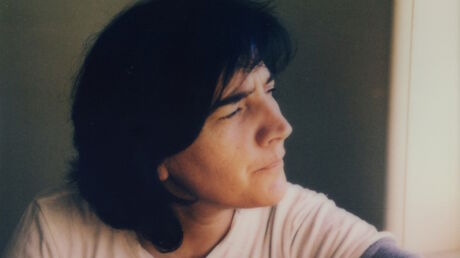Meistaraspjall um heimildamyndagerð með Mörtu Andreu
Boðið verður upp á meistaraspjall með Mörtu Andreu í heimildamyndaveislu Skjaldborgar og IceDocs sem fer fram í Bíó Paradís 14. september.
Marta hefur mikla þekkingu og reynslu bæði sem ráðgjafi heimildamynda og vinnusmiðja á vegum virtra hátíða og samtaka á borð við Torino Film Lab, Eurodoc og Vision du Reel Rough Cut lab og sem og af valnefndarstörfum, m.a. hjá World Cinema Fund. Á vegum SKL hefur hún verið ráðgjafi í vinnusmiðjum sem haldnar hafa verið hér á landi á IceDocs og í Hafnar.haus og styrktar af Kvikmyndamiðstöð Íslands.
Fyrra meistaraspjall Mörtu Andreu fer fram 14. september kl. 11:30-14:00. Það ber yfirskriftina „Lovesong, a non-existent film in progress“ og er viðburður sem nálgast frekar kvikmyndagjörning en hefðbundið meistaraspjall.
Seinni viðburðurinn fer fram 17. september kl 18.00-20.30 og ber yfirskriftina „Open the Cage and Fly or How to Write Our Creation Without Forgetting Freedom“. Þar fer Marta yfir það sem þarf að undirbúa þegar handrit að heimildamynd er skrifað.
Hægt er að bóka miða á vef Bíós Paradísar .
Upplýsingar um meistaraspjallið (á ensku):
Lovesong, a non-existent film in progress
14. september, kl.11:30-14:00
The images begin to appear. They show an attempted film portrait of a Catalan poet, Lala Baly, that I left unfinished 20 years ago.
In them, she reads her poetry in the family home's garden, reflects, waits, sometimes despairs, laughs, and walks through the forest... We can also see different corners of the garden, trees, cats, many cats, mountains, shadows, and ghosts. There are also other images with which the images I once filmed keep an affinity: fragments of films that are still haunting, Tishe, A Humble Life, Parc Central, Santiago, Chastie… There are books and poets, The Magic Mountain, for example, Ingeborg Bachmann, Wislawa Zsymborska… There are painters, Cézanne and his almost eighty mountains, Kieffer… There is music, Bach, the 26th of his Goldberg's Variations. There is loss… and there is also magic, thanks to Agnès Varda and Buster Keaton.
While the images follow one after the other, I -sitting by the screen- read my text, a monologue, or is it a dialogue? With the images? With the poetry? With the audience? I share why I wanted to film Lala and speculate why I could not achieve it. What does it mean to make images? What if making images would not be anything other than recognising them as a place of affection and belonging? A place that we could call home? And what if this bond were broken? This Lovesong is an attempt to return to the images one once loved and belonged to. It is an essay to regain the lost voice and a reflection on the possibility of creating again.
Open the Cage and Fly or How to Write Our Creation Without Forgetting Freedom
17. september, kl. 18:00-20:30
The sculptor Richard Deacon compared two prehistoric stones. One was perfect, shiny, and beautiful. The other was clumsy, flawed, and ugly. The first was a hand axe, which had a purpose—to cut, to hunt. The second was a piece of art, the result of a creation, without purpose or reason for being what or how it was. It was an act of freedom.
If creating, if making a film, is an act of freedom, how can we cope with all these duties and needs demanded by workshops, pitching, and financing processes?
In chapter 6 of his Anti-courses (1976), Henri Langlois said that cinema in freedom is the cinema that is entirely in life. “It is a cinema that is not afraid to make mistakes... or even to show them”. Indeed, freedom has to do with being able to commit mistakes, to get lost, or have accidents, to make mistakes, to be exposed, to contradict oneself, to not know.
The task would then be to understand writing as a way of preparing oneself to exercise this freedom, to find the way to write freely while complying with the demands of what could be called social writing, that which would allow us to find the necessary resources and accomplices to make our films a reality.
